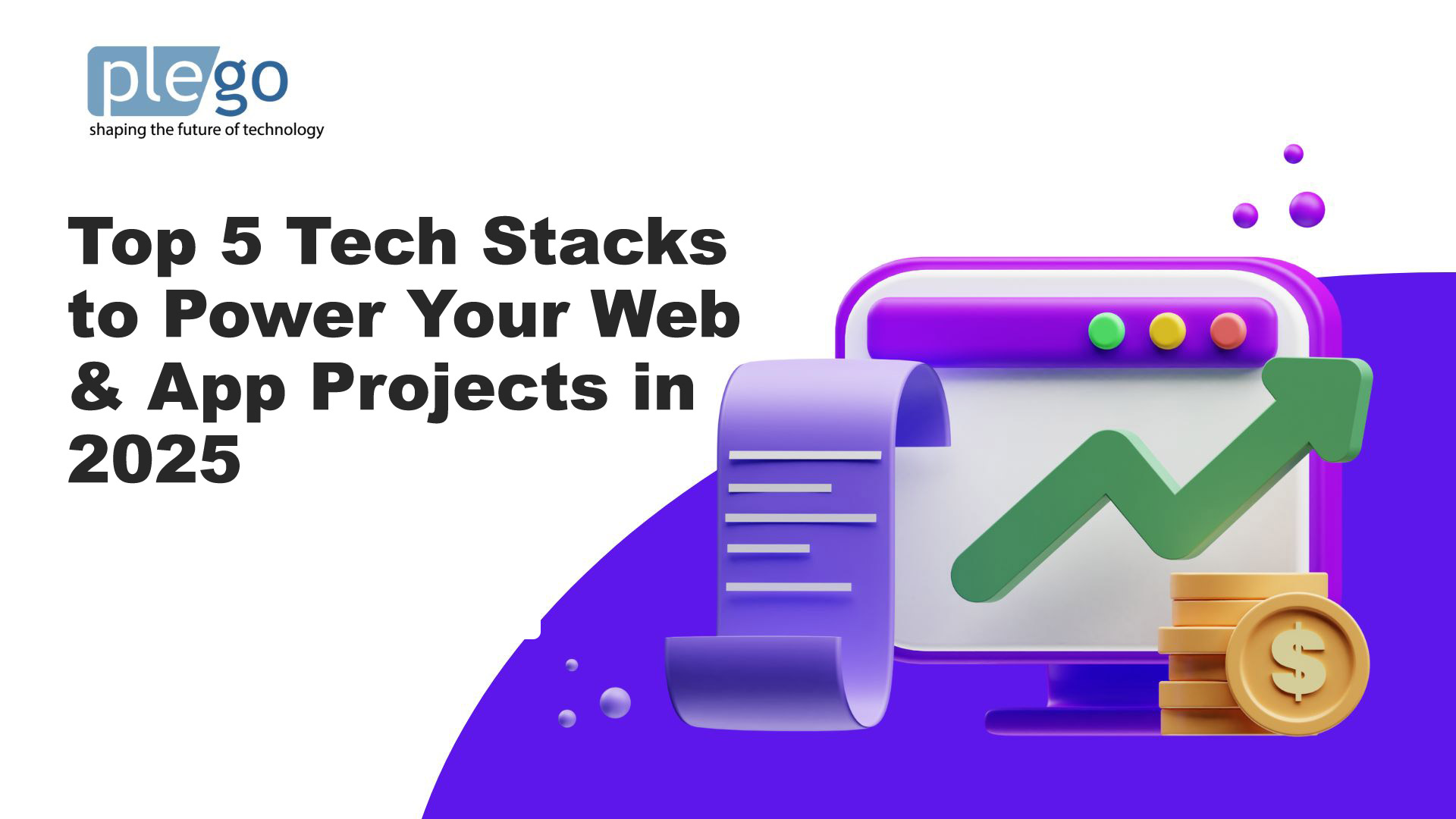Top 5 Tech Stacks to Power Your Web & App Projects in 2025

Table of Contents
As we step further into 2025, technology continues to evolve rapidly — and choosing the right tech stack has never been more crucial for building reliable, scalable, and cost-effective digital products.
Whether you’re launching a startup MVP, building a custom enterprise website, or scaling an existing mobile app, your tech stack is the foundation of your success.
So, how do you pick the right one?
Let’s explore the 5 best tech stacks dominating the development world in 2025 — and how they can fit into your goals.
What is a Tech Stack?
A tech stack is the combination of technologies, frameworks, and tools developers use to build web or mobile applications. It includes:
- Frontend technologies (what users see and interact with)
- Backend technologies (servers, databases, and logic that power your app)
- Development and deployment tools
Choosing the right stack is like choosing the right engine for your car — it needs to match your goals, budget, and performance needs.
Tech Stack Components at a Glance
Here’s a quick breakdown:
| Component | Purpose |
|---|---|
| Frontend | HTML, CSS, JavaScript (React, Vue, Angular) |
| Backend | Node.js, PHP, Python, Java, etc |
| Database | MongoDB, MySQL, PostgreSQL |
| Infrastructure | Cloud platforms like AWS, Azure, Google Cloud |
Need help choosing the right architecture? Our Product Development and Cloud Migration teams can guide you based on your business needs.
The Top 5 Tech Stacks for 2025
MERN Stack
MongoDB, Express.js, React, Node.js
This stack is a favorite for dynamic web applications — from eCommerce platforms to interactive dashboards.
Why choose MERN?
- All JavaScript, making it faster to develop.
- Scalable backend with Node.js.
- Smooth, responsive UI with React.
Best for: Custom Web Applications, real-time tools, SaaS platforms.
MEAN Stack
MongoDB, Express.js, Angular, Node.js
The MEAN stack is ideal for enterprise-grade solutions and apps with complex workflows.
Why choose MEAN?
- Angular offers strong structure and two-way data binding.
- Excellent for long-term scalability.
Best for: Enterprise Websites, AI-powered platforms, and large-scale internal systems.
MEVN Stack
MongoDB, Express.js, Vue.js, Node.js
Vue.js gives MEVN a fresh and lightweight edge. It’s great for teams who want flexibility without sacrificing power.
Why choose MEVN?
- Simple and elegant code with Vue.
- Seamless integration with RESTful APIs.
Best for: UI/UX focused apps, eCommerce, and startups building MVPs.
LAMP Stack
Linux, Apache, MySQL, PHP
Still going strong! The LAMP stack is a proven foundation for websites and applications that prioritize reliability.
Why choose LAMP?
- Open-source and budget-friendly.
- Massive community support.
Best for: Web Maintenance & Support, CMS sites, and government portals.
Serverless Stack
(AWS Lambda, Azure Functions, Google Cloud Functions)
Going serverless means your app runs without needing to manage infrastructure — great for fast, agile development.
Why go Serverless?
- You only pay for what you use.
- Built-in scalability for modern cloud-native apps.
Best for: Cloud-first apps, Touchscreen Interfaces, and cost-conscious startups.
Why Your Tech Stack Matters
The right tech stack impacts:
- Speed of development
- Cost of ownership
- Performance and security
- Your ability to scale or pivot
- Long-term maintenance
At Plego, we guide companies through Product Strategy and help them choose stacks aligned with their goals — whether you’re building from scratch or modernizing legacy software.
Wrapping It Up
Tech stacks are not one-size-fits-all. What works for a real-time analytics dashboard might not work for an eCommerce store. Understanding your use case is key.
If you’re unsure where to begin or which tech stack is right for your application, we’re here to help. From Web & App Development to AI Integration and Quality Assurance, our team at Plego can walk you through every step.
